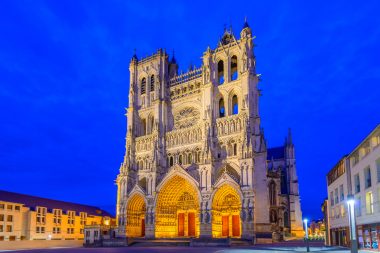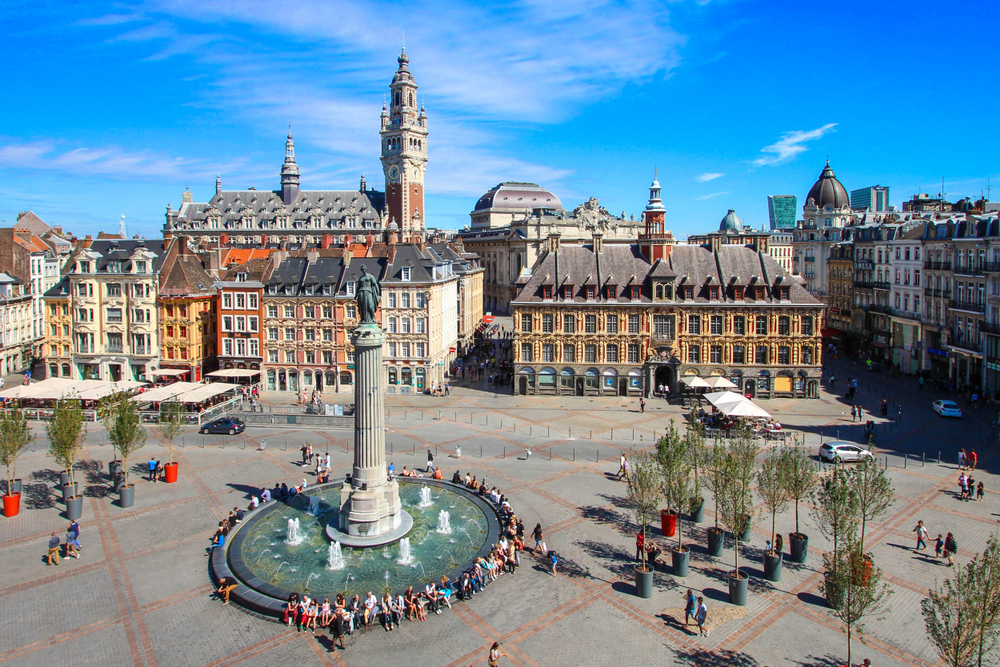Hauts-de-France is the northernmost region in France, bordering both Belgium and the sea, and is a popular destination for holidaymakers. In fact, this region has only existed since 2016, when the two regions of Nord-Pas-Calais and Picardy were merged. Today it consists of five smaller areas: Pas-de-Calais, Nord, Somme, Aisne and Oise. Hauts-de-France is home to the cities of Lilie and Amiens. Like any other region, this one is also shaped by culture, but can also convince with its nature. In this post, we’ll take a look at Hauts-de-France and what it has to offer for travelers.
Special sights
Hauts-de-France is a fantastically beautiful area in the north of France, which can offer both nature and culture. If you don’t want to travel directly to the interior of France , this is a suitable holiday destination. It combines many popular excursion destinations, there is something for every taste.
Experience coastal regions and nature
Since Hauts-de-France is a coastal region, it is particularly convincing here. In the north of the area you will find the largest chalk cliffs in Europe, which shimmy along the beach and rise several meters into the air. The white stone formations, covered with a green meadow, are definitely worth a visit. There are also many smaller towns and villages on the coast, and you can also see many lighthouses. The Bay of Somme is probably the most popular destination
This region is also special for cyclists, because the landscape is largely flat and offers a large and developed system of paths. Hauts-de-France, with its various natural landscapes, can also be explored in this way. There are many canals and rivers where the bike paths run. Nature lovers will definitely get their money’s worth, the region offers many national parks, gardens, parks and forests.
Experience cities and culture

But there is also a lot to discover for city travellers. Lily and Amiens are the largest cities in the region, but many of the small towns and villages also have a lot to offer. The architecture alone is worth a look and offers many great photo opportunities. Lille is the modern and cultural centre, a rapidly growing city at the moment. Amiens is much sleepier, often referred to as the Venice of northern France. The city is crisscrossed by canals and many gardens. History lovers should definitely visit some of the areas, including Bergues, Cassel or Arras. There are also many imposing buildings to see, such as Lille Cathedral, Notre-Dame Cathedral in Amiens (not to be confused with the one in Paris , the one in Amiens is almost twice as large) or various castles in the Pierrefonds, Chantilly and Compiègne regions. The Louvre-Lens Museum is also worth a visit.
To learn more about the history of the region, there are also many museums and monuments. The region is tactically one of the most important in all of France, especially during the First World War. It was a protection of the capital Paris, had to fend off attackers from the sea as well as from Belgium . There are memorial sites throughout the Hauts-de-France region. The region is also known for its textile and coal processing. There are also numerous museums and sights for this.
The best time of year to travel
Due to its proximity to the sea, this region is extremely mild. In summer it is not particularly hot, but in winter it is rarely very cold. The temperatures are always in a range between 0 and 25 degrees. This makes it a perfect travel region. However, it could rain more than expected, especially the coastal regions are sometimes difficult to assess and the weather can change quickly.
Summer is definitely worthwhile for a beach holiday, but the coastal regions around Hauts-de-France are also worth a visit in autumn and spring. Only wrap a little thicker here, as it can get very windy. In the warmer seasons, a trip into nature is also worthwhile. The cities can be visited all year round, which is mainly due to mild temperatures.
Culinary specialties
The Hauts-de-France region also has some delicious dishes to offer. For example, the sausage varieties andouille and andouillette are well-known. However, due to its proximity to Belgium, the area is particularly influenced by its eating habits. These include, for example, the Flemish carbonate, the fluffy cake called Merveilleux and Gaufre Fourrée Lilloise, which have similarities to Belgian waffles. The most popular cheese in the region is Maroilles.


